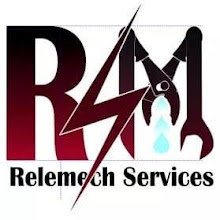Water less toilets are a genuine, minimum energy, on-site alternative to centralised reticulated systems that transport the problem downstream. They can also reduce the site restrictions, and pollution and nutrient problems, of systems such as septic tanks. The most common type of water less toilets is the Composting toilet. Here is an overview on water less toilets technologies as you look at options available for you with regards to water less toilet technologies.
 |
| A Beautiful Water Closet |
Compost toilet.
A composting toilet is a type of dry toilet that uses a predominantly aerobic processing system to treat human excreta, by composting or managed aerobic decomposition. These toilets generally use little to no water and may be used as an alternative to flush toilets. They have found use in situations where no suitable water supply or sewer system and sewage treatment plant is available to capture the nutrients in human excreta.
Types of compost toilet
Continuous composting toilets
These single container toilets receive excrement which decomposes as it moves slowly through the container and is removed as compost from the end-product chamber. Well-known designs with prefabricated models are also available for installation but must be approved by health departments. They may also be constructed by owner–builders.
 |
| Continuous composting toilet |
Single containers are fitted under a bathroom and can easily replicate a flush toilet with little physical or social adjustment.The container is permanently fitted under the toilet seat, and never has to be fully emptied as the compost can be gradually removed when it reaches the end-product chamber.
A disadvantage of the continuous system is that it may allow fresh material and pathogens (disease causing organisms) deposited on the top of the pile to contaminate the successfully decomposed end-product at the bottom of the pile.
Another drawback is that, if a problem occurs with the toilet, the system can be out of order until the problem is fixed because there is only one container. Sometimes the pile does not actually move down the slope of the container and can become compacted and very difficult to remove.
Batch composting toilets
Batch CTs consist of two or more containers that are alternated so that the active container is being used while the pile in the fallow container has time to compost without the addition of fresh excrement and the potential for re-contamination.
 |
| Batch composting toilets |
The fixed chamber batch is another example. Two containers are permanently in place and the seat is moved when the time comes to change containers.
The full containers in the batch system need to be replaced by an empty container. They must be disconnected from under a toilet seat or the seat moved over a new container. Batch systems can therefore take up more space in the bathroom or under the house.
Some models have removable containers mounted on a turntable beneath the toilet for collecting waste, which saves space and simplifies container changeover.
Self-contained composting toilets
 |
| Self-contained CT |
Self-contained CTs are available for use where a composting chamber can’t be installed beneath the floor, such as an existing on-ground concrete slab. They are usually fitted with a small heater and fan to facilitate waste decomposition, and have the capacity to serve only households with a maximum of 3–4 people.Self-contained composting toilets can be installed on an existing concrete slab.
Maintenance of composting toilets
The CT is relatively simple technically but requires more attention than a flush toilet.
Add some carbon-based material or bulking agent, such as dry leaves or softwood shavings, frequently to the container, preferably daily or with each use. This gives the proper carbon–nitrogen mix, helps aerate the pile and prevents compacting. Some commercial suppliers say this is not necessary for their design if their directions are followed but experience indicates the addition of bulking agent helps produce good compost.
Incinerating toilets
Incinerating toilets can also be waterless. Instead of breaking down waste biologically, these toilets torch it. They send the waste to an incinerator, where it's burned to sterile ash.
The toilet sits in your bathroom and has an electric exhaust pipe that exits through your roof. To run, it needs batteries or can be plugged into a wall outlet. You use the toilet normally, toilet paper and all. But before you flush, you must close the lid
Then the toilet fires up. Flushing is handled by a type of dry method, like an auger (essentially a large screw) that turns to push the waste into the incinerator. A propane, diesel or natural gas tank feeds into the incinerator. The incinerator injects fuel and ignites your waste, burning it .Urine cooks for up to 10 minutes; solid waste takes about half an hour.
Like composting toilets, these toilets can be self-contained or remote, putting the incinerator either inside or outside of the toilet. Self-contained models have you practically sitting on the incinerator, which sounds alarming, but the system will shut off if you open the lid to use it.
These systems thoroughly insulate you from your excrement. Waste is almost immediately changed into something else. You don't need to inspect the waste, tend to it during its transformation or guess about its progress. It's time to empty the toilet when the indicator light tells you so.
Do you use a water less toilet system you would like featured or you would like shared with the world. Talk to us and let us show the world on how to save on water.
Do you use a water less toilet system you would like featured or you would like shared with the world. Talk to us and let us show the world on how to save on water.












